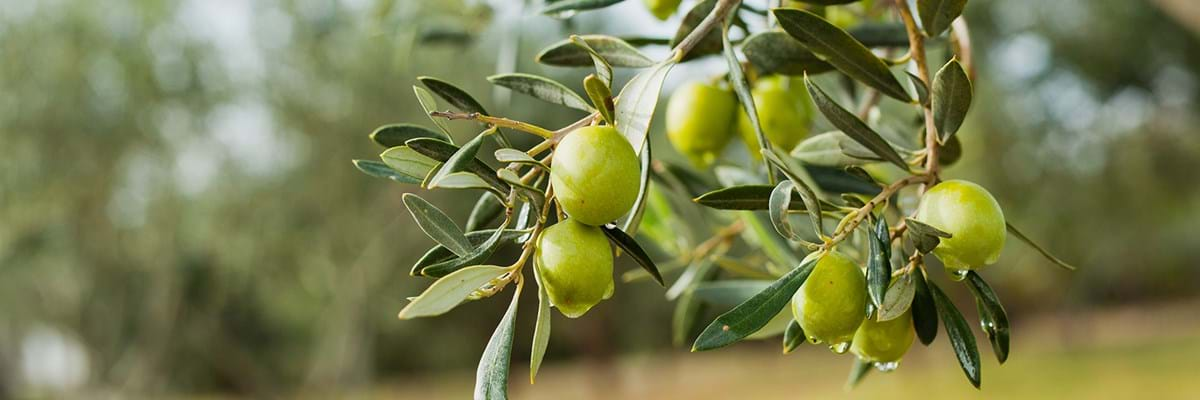From sporting champions to sculptors, health-conscious cooks and beauty-conscious noblewomen, the olive tree and its fruit have been central to Mediterranean culture for thousands of years.
Whether you choose to believe the tree reached Greece by spreading from the Middle East, or was gifted to its people by the goddess Athena, you are unlikely to finish your holiday without enjoying its place in the landscape and cuisine.
The city of Sitia in Crete is getting ready to welcome judges and olive oils from every corner of the world as they host the 7th edition of the International Olive Oil Competition "Athena International Olive Oil Competition 2022" from 7-9 April. More than 550 samples of the most renowned olive growers worldwide, will be judged over the 3 days. Sitia olive oil enjoys multiple distinctions, while PDO Sitia Lassithi is one of the most recognized commercial brand names in international markets and almost 3 million olive trees exclusively of the "Koroneiki" cultivar, cover over 140,000 acres of land, with an annual production ranging from 10,000 to 15,000 tons of olive oil.
Also in Crete, the Grecotel has its own farm, Agreco, where centuries-old organic farming practices continue. It features a traditional olive press and guests can experience traditional Cretan life by participating in farm activities including pressing olives. Farm tours take place on weekday evenings. Agreco’s chef prepares traditional dishes featured on the Taverna menu and guests enjoy the shade of a large olive tree and vines wrapped around the pergola while dining on the terrace which overlooks the sea.
Crete is also home to a poignant natural memorial – a burnt olive tree in the lush Botanical Gardens, near Fournes, commemorating a devastating fire in 2003.

Olive oil is such a part of Greek culture that it was once used to anoint champion athletes and you’ll find it celebrated everywhere. At the covered marketplace in the old town of Chania, in Crete, more than 50 stalls sell oil and other produce and crafts, and and in Corfu, the Venetians gave a gold coin for each one planted. Corfu’s old town is a joy for lovers of authentic souvenirs, including homemade olive oil, olive wood sculptures and the delicious olive-wood smoked ham, nouboulo. You can also visit one of the oldest living trees in Europe – a 1,200-year-old olive tree, named Evdokia by residents in the village of Strongyli.
The Liocharis Olive mill on Kefalonia, produces oil in the traditional cold-press method, and then expertly blended to produce fantastic olive oil, resulting in a gold award at the New York International Olive Oil Competition. The oil comes from olives mainly grown by families with just a few trees, then blended with the different pickings (early pickings are much more peppery, late pickings much sweeter) to give the best taste. You can visit the olive mill for a tasting on an Olympic Holidays Flavours of Kefalonia excursion where you will also visit the Robola winery and a bee keeper’s emporium for honey tasting.
A vineyard tour makes for a fascinating day, and many also bottle their own olive oil. You can round off a tour of Kefalonia’s Gentilini Winery, near Lassi, with a tasting accompanied by cheese, fresh bread, grape tomatoes and organic extra virgin olive oil, and the Ambelonas Winery, Corfu, has a museum, restaurant and shop, and holds cookery classes.

Not to be outdone by Corfu – in the lovely sleepy village of Exo Chora, in Zante, the old tree is said to be 2,000 years old and the 3rd largest in Europe. Very sculpture like, this incredible olive tree has now branched out into two parts and is a lovely place to visit, as well as meet some of the locals who sell their local produce.
Many Zante restaurants serve authentic cuisine, including the family-run Olive Tree Taverna, in Tsilivi, where Lakis cooks with free range eggs, olives, herbs and lemons, and there’s a chance to tour the traditional Aristeon Ecological Olive Press factory at Lithakia.

Resorts & Hotels with Olive Groves and Oils
The Rodostamo, on Kommeno Bay, Corfu, takes pride in seasonal, organic produce, while other resorts surrounded by groves include Minthis Hills, Paphos; Ikos Oceania, Halkidiki; Pedi Beach, Symi and the Elounda Ilion, Crete, where meals are prepared using Cretan products and olive oil.

When the Westin Costa Navarino, in the Peloponnese was built, the landscape artists uprooted and then replanted all 16,000 olive trees. Featuring authentic food from the region the resort which has been awarded numerous accolades in international competitions such as Terraolivo, Olivinus and the New York International Olive Oil Competition. Navarino Icons Estate Grown Extra Virgin Olive Oil (EVOO) has also been named as EVOO of the Year 2016. Guests can join a tutored olive oil tasting session, experience harvesting olives and visit a nearby mill to help make the oil.

Lindos Blu "Five Senses" Restaurant, in Rhodes, features an olive tree which takes pride of place as a centerpiece in the outdoor restaurant area. The tree was transferred from the hotel owner’s olive grove in the village of Soroni, in the North West of the island in 2018. The hotel owner also supplies olive oil to the hotel.

On Paxos, which has more than 200,000 trees, olive-growing expanded under the Venetian empire – satisfying demand not only for a healthy food, but a prized skin moisturiser and antioxidant.
The harvest begins in November, and if you plan a ‘winter sun’ visit to Paxos, you might even be welcomed to help – although many growers simply spread nets, and wait for the olives to drop, rather than ‘combing’ the branches.
Whatever you choose, be sure to take home produce from olive trees – it’s the perfect way to extend your holiday, eating Greek-style brings sunshine to your life wherever you are!




